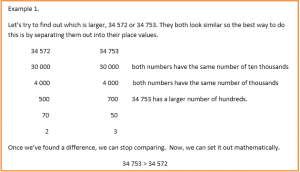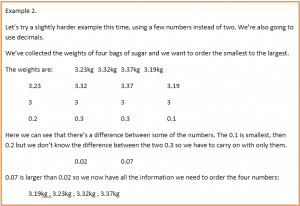Table of Contents
Unit 1 | Algebra
Page 1 | Expressions and Formulae
Page 3| Solving Linear Equations
Page 4| Expanding and Factorising
Page 5| Factorising Quadratics and expanding double brackets
Page 6| Patterns and Sequences
Page 7| Simultaneous Equations
Page 8| Changing the subject of a Formula
Page 9| Adding , subtracting algebraic formulas
Unit 2 |Graphs
Page 1 | Straight line graphs
Page 2 | Graphs of Quadratic functions
Unit 3 |Geometry and Measure
Page 2 | Symmetry
Page 3 | Coordinates
Page 4 | Perimeter, Area, Volume
Page 6 | Measurement
Page 7 | Trigonometry
Page 8 | Pythagoras
Page 9 | Angles
Page 10 | Shapes
Page 11| Time
Page 12 | Locus
Unit 4 | Numbers
Page 1 | Speed, Distance and time
Page 2 | Rounding and estimating
Page 3 | Ratio and proportion
Page 4 | Factors, Multiples and primes
Page 5 | Powers and roots
Page 7 | Positive and negative numbers
Page 8 | Basic operations
Page 9 | Fractions
Page 10 | Percentages
Unit 5 | Statistics and Probability
Page 1 | Sampling data (MA)
Page 2 | Recording and representing data
Page 3 | Mean median range and mode
Page 4 | Standard deviation
Unit 4 | Calculus
Ordering Numbers.
When ordering numbers, it is a good idea to
compare the digits in their place values, especially when the numbers look very similar. We compare the largest place value first, then slowly move down until we find a difference.
There are also some mathematical signs we can use to show the information we have found out
> This means ‘more than’ so for example, 10 > 5
Think of the signs as the snapping jaws of crocodiles.

The jaws of the crocodile should always be facing the bigger number. Remember, crocodiles are greedy so that’s the number they’ll eat.

We can also use ordering to compare decimals in the same way and we can also use ordering to list numbers from largest to smallest or smallest to largest.

- Re-arrange the following bike prices, in ascending order.
£140.21, £125.60, £141.33, £75.50, £149.5

- Re-arrange the following masses in descending order
6.6 kg, 9.6 kg, 0.6 kg, 42.1kg, 1000g

- Place the following numbers on the number line below
5.5, 8.5, 3.5, 4.5, 10.5
 Correct the number sequence below by placing the correct sign, < or >, in each of the the boxes.
Correct the number sequence below by placing the correct sign, < or >, in each of the the boxes.
- 1400cm
 1.5 km b) 1.6
1.5 km b) 1.6  1.5
1.5 - 1420 mi
 1640mi
1640mi
1) Zain: favourite basketball hall in the rangers. He recorded how many people attend three game over the past three months
Raina the attendance
a) To the nearest ten b) to the nearest hundred.
2) From the following set of numbers below, identify and underline the number which is nearest to 460.
420, 500, 440, 470, 450, 560, 455, 412
3) Re-arrange the number below in order, writing from the smallest and round each decimal below to one decimal place.
4.12, 0.4, 0.456, 0.3125, 0.419, 0.632.
4) Identify and underline the decimal which will round up to one as their nearest whole number.
Identify which product of the number which will equal to 180.
Underline your answer
142 + 81, 146 + 41 , 180 + 1, 146 + 4
5) 15 bags of potatoes cost £33.60. John pab in an order for 60bags. How much change will john get it he pay with seven £20 notes? show your working out.

